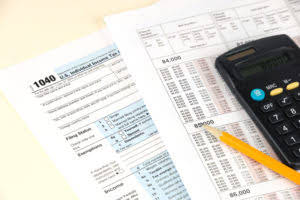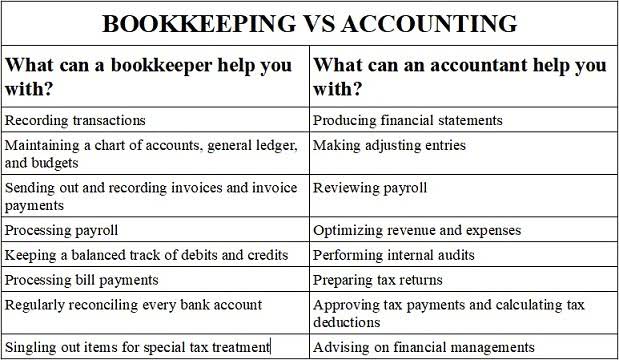A complete set of financial statements is used to give readers an overview of the financial results and condition of a business. The financial statements are comprised of four basic reports, which are noted below. Now we already know what financial statements the company needs to prepare for the period in order to comply with the relevant financial reporting standard. Also, users want to see the cash movement of the company on investing activities which include the actual fund that the company received and paying off the loan, for example. The users could also understand the company’s cash flow on investing activities by reviewing the cash movement in investing activities section.
Thus, the elements of the financial statements of a for-profit business vary somewhat from those incorporated into a nonprofit business (which has no equity accounts). With the income statement and balance sheet under our belt, let’s look at the cash flow statement and all the insights it tells us about the business. Overall, top-performing companies will achieve high marks in operating efficiency, asset management, and capital structuring. On the income statement, analysts will typically be looking at a company’s profitability. Therefore, key ratios used for analyzing the income statement include gross margin, operating margin, and net margin as well as tax ratio efficiency and interest coverage. Three of the most important techniques are horizontal analysis, vertical analysis, and ratio analysis.
Income Statement: Definition, Types, Templates, Examples, and More
All three statements are interconnected and create different views of a company’s activities and performance. A balance sheet explains the financial position of a company at a specific point in time. As opposed to an income statement which reports financial information over a period of time, a balance sheet is used to determine the health of a company on a specific day. If a company takes out a five-year, $4,000 loan from a bank, its assets (specifically, the cash account) will increase by $4,000.
- In some instances, analysts may also look at the total capital of the firm which analyzes liabilities and equity together.
- Google Finance offers investors real-time quotes, financial news, and international market data at /finance.
- Current assets generally have a useful life in less than 12 months from the ending date of the reporting period.
- That said, a startup or early-stage business often faces reporting negative retained earnings as it takes time to build a business and become profitable.
The balance sheet provides an overview of the state of a company’s finances at a moment in time. It cannot give a sense of the trends playing out over a longer period on its own. For this reason, the balance sheet should be compared with those of previous periods. Profit or loss refers to net income or the income statement’s bottom line that results from deducting expenses from revenues. Revenues refer to sales of goods or services that the entity generates during the specific accounting period. Financial statements are also read by comparing the results to competitors or other industry participants.
Rates of Return and Profitability Analysis
Current assets generally have a useful life in less than 12 months from the ending date of the reporting period. It is assumed that the entity could use or convert the current assets into cash in less than 12 months. The first asset class is the current asset which refers to short-term assets, and these kinds of assets are not depreciated. Google Finance offers investors real-time quotes, financial news, and international market data at /finance. Similar to Yahoo! Finance, Google allows users to find current quotes, research historical data like price charts, splits, and dividends, select technical analysis techniques, and compare different trading instruments. Comparing financial ratios with that of major competitors is done to identify whether a company is performing better or worse than the industry average.
Link between Financial Statements
That is prepared by an entity monthly, quarterly, annually, or for the period required by management. Financial ratios are created with the use of numerical values taken from financial statements to gain meaningful information about a company. The term balance sheet refers to a financial statement that reports a company’s assets, liabilities, and shareholder equity at a specific point in time. Balance sheets provide the basis for computing rates of return for investors and evaluating a company’s capital structure. The statement of cash flows presents the cash inflows and outflows that occurred during the reporting period. This can provide a useful comparison to the income statement, especially when the amount of profit or loss reported does not reflect the cash flows experienced by the business.
This figure is considered a company’s book value and serves as an important performance metric that increases or decreases with the financial activities of a company. The three main types of financial statements are the balance sheet, https://business-accounting.net/ the income statement, and the cash flow statement. These three statements together show the assets and liabilities of a business, its revenues and costs, as well as its cash flows from operating, investing, and financing activities.
What Are the Main Types of Financial Statements?
Liabilities can be calculated by eliminating the total equities from total assets or accumulating total current liabilities and total long-term liabilities. It is based on the company’s policies to recognize which amount should be classed as current assets and which amount should https://kelleysbookkeeping.com/ go to fixed assets. Yet, the policies should be aligned with current practice or market and reflect the real economic value. In other words, fixed assets are the resources based on nature converted into cash or cash equivalent in more than one year accounting period.
In short, the balance sheet is a financial statement that provides a snapshot of what a company owns and owes, as well as the amount invested by shareholders. Balance sheets can be used with other important financial statements to conduct fundamental analysis or calculate https://quick-bookkeeping.net/ financial ratios. In this part of our analysis of financial statements, we unlock the drivers of financial performance. By using a “pyramid” of ratios, we are able to demonstrate how you can determine the profitability, efficiency, and leverage drivers for any business.
Assets of the entity at the specific period can be calculated by the accumulation of liabilities and equities or total current assets plus total fixed assets. Determining individual financial ratios per period and tracking the change in their values over time is done to spot trends that may be developing in a company. For example, an increasing debt-to-asset ratio may indicate that a company is overburdened with debt and may eventually be facing default risk. The information found on the financial statements of an organization is the foundation of corporate accounting. This data is reviewed by management, investors, and lenders for the purpose of assessing the company’s financial position.








































































